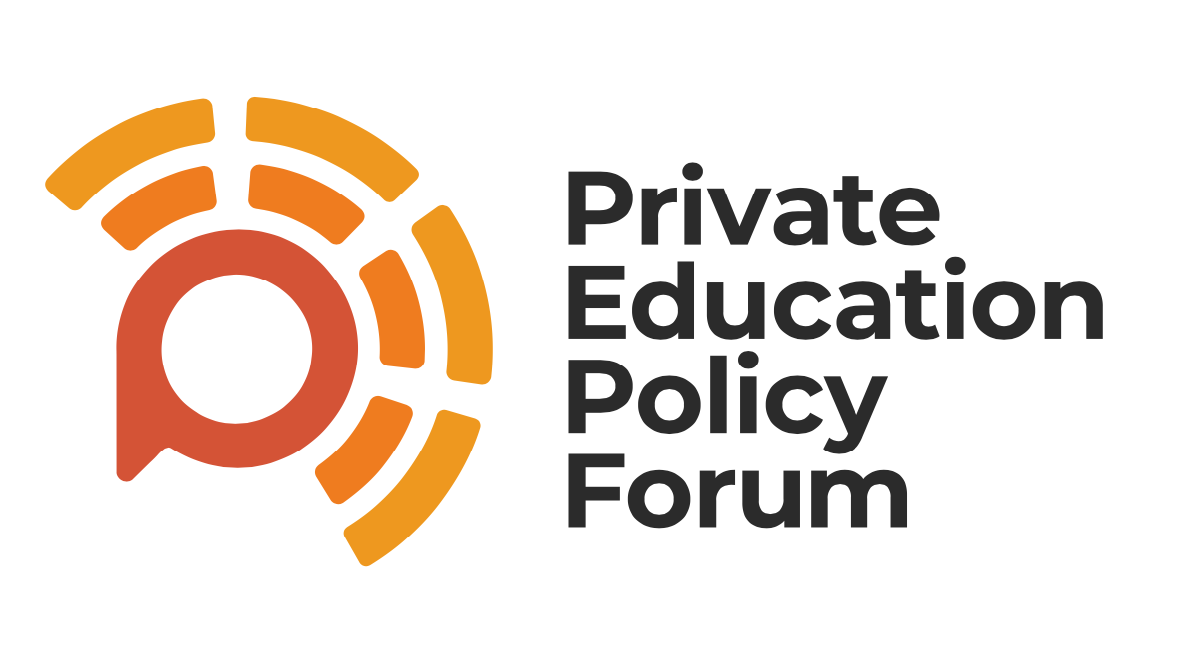
Diarmid Mackenzie, Sands School, Devon
On both sides of the debate about VAT on independent school fees, participants frequently overlook the substantial diversity within the sector.
At one extreme, high-profile public schools such as Eton and Winchester have fees of over £50,000. Meanwhile, there are also schools like Ysgol Gymraeg Llundain, in London, or Emmanuel School, Walsall, charging annual fees of around £4,000.
In this article, I want to attempt to add some nuance to this debate, by looking more closely at these lower-fee schools.
I will explain how the government’s proposed legislation could be substantially improved by the addition of some targeted exemptions.
VAT will harm small, low-fee schools
Among the 1,400 independent schools represented by the ISC, more than 200 have fees below £11,000 per year.
Ninety-five have fees below £7,500 per year, and 53 have fees below £4,500 (far below the funding received by most state schools). Most of these schools are small, often with fewer than 150 pupils, and the families that use them are far from wealthy.
Concern about what Labour’s proposals mean for these small, low-fee schools is not new. In May 2023, Richard Adams wrote a piece for the Guardian profiling several small, low-fee schools that would be severely harmed by the policy.
More recently, Dan Hitchens has written in the Spectator about how the policy endangers “the smallest, poorest, most threadbare schools in the country”. He has described this as “the strangest policy story I have ever reported on”.
Sadly, these concerns seem to have fallen on deaf ears within the Labour Party.
In this context, it has been heartening to see a Labour MP finally speak out publicly about this issue. Rachael Maskell, Labour MP for York Central has recently called for a VAT exemption for low-fee schools.
She has particular concern for the York Steiner School, within her constituency, which has annual fees of around £5,500.
This is just one of many independent schools across the country offering alternative pedagogies, including Steiner, Montessori, Froebel, and Democratic approaches.
Alternatives such as these can be crucial for children who struggle to fit into the increasingly rigid state school system.
There are many such children, and their particular struggles are not always effectively identified and addressed by the current SEND system.
Diverse children need diverse provision
Wendy Morris, a postgraduate researcher in education at the University of Chichester has argued in her paper (titled “Stifling Breadth of Provision in British Education”) that small, innovative schools play a vital role in the UK’s education system, particularly for children with special educational needs and those who thrive in non-conventional environments.
She argues for a “VAT threshold for schools with annual fees below £10,000”, adding “these adjustments would protect smaller schools while maintaining broader policy goals”.
Mental health professionals have also written to the Treasury about the children they work with who struggle with school attendance.
They are deeply concerned about the potential impact on children who have been unable to participate in education at mainstream state schools, but have managed to find small independent schools that can meet their needs.
Many of these children do not have EHCPs (sometimes as a consequence of the ‘utter disarray’ in the SEND system), and parents often cut their other living costs to the minimum, in order to fund their children’s places themselves.
But their ability to stretch is finite and many of them will find it impossible to cover an additional 20 per cent in fees.
The prospects for these children, if they return to the state system that failed them once already, are bleak.
In light of these concerns, there is a growing consensus that there should be some level of fees below which independent schools should be exempt from VAT.
But what would be an appropriate threshold for such an exemption?
There are two ways of looking at this question, and interestingly they both seem to point towards similar answers.
Fairness, funding, resources and luxury
The first way to look at this question is through a lens of “fairness”.
In the recent House of Lords debate on this topic, Baroness Ramsey of Wall Heath was one of the few Labour members of the Lords to speak in favour of the government’s policy.
In her speech, she justified their proposals on the basis that VAT would only apply to schools “…whose parents choose to pay for their children to have a more well-funded education than the state can afford to provide”.
But this is untrue.
There are many independent schools providing education that is no better-funded than that provided by the state (in some cases, significantly less well-funded). These schools do not have more resources than state schools.
They make do with the same resources, but offer them to pupils and families in a different way. Nevertheless, come January 2025 every one of these schools will have to apply VAT to their fees.
Indeed, there is an important truth behind Baroness Ramsey’s argument. Her words imply, correctly in my view, that it would be deeply unfair to apply VAT to those schools whose funding is no better than that of state schools.
These schools are not “engines of privilege”. They are simply places that accommodate diversity, whether religious, linguistic, neurological or pedagogical.
It would be a fair policy for those schools whose fees are similar to the cost of providing a state school education, to be exempt from VAT.
What would this mean in terms of a threshold?
The DfE figures say the per-pupil funding for state schools in 2024-25 is £7,690, but this number does not include capital costs associated with buildings and maintenance.
Independent schools also face a range of other costs that state schools are exempted from.
Add all this together (as I have done here), and we can project that the cost of providing state-equivalent provision in an independent school in 2024-25 would be £9,194 for a primary school, and £10,274 for a secondary school (excluding VAT).*
Any school with fees below this level is less-well funded than an average state school. Any school with fees within 10% of these levels can reasonably be described as having a similar level of funding to state schools, and so should be exempt from VAT on their fees.
Benefitting public finances
The second approach concerns one of the government’s explicitly stated policy aims: to “support the public finances”.
It is widely recognised that applying VAT to private school fees will cause some pupils to move from private schools to state schools (either due to parental choice, or as a result of school closures).
This will result in additional costs to the state, the exact scale of which remains much debated.
The balance of revenue and costs will be very different for lower-fee schools than it is for higher-fee schools.
- Most obviously, lower school fees bring in less VAT revenue.
- But also, the rates at which students transfer across to state schools could be higher for lower-fee schools.
I’ve explored this topic at much greater length elsewhere. But even on the most optimistic projections for the number of pupils remaining within independent schools, imposing VAT on independent schools with the lowest fees will result in a significant net loss for the government, because of the higher number of pupils who will transfer to the state sector from those schools.
There must be some fee level at which the government starts to “break even”, above which VAT on fees will start to make a positive contribution to the public finances.
Assessing this threshold with accuracy is not easy.
There is a sparsity of high-quality data. The best data I have on this comes from a survey of 40 small schools (with average annual fees of £10,000).
They anticipate that they will lose 18.5% of their pupils due to fee increases necessitated by VAT. This high proportion suggests that transfers will indeed be significantly skewed towards pupils currently in lower-fee schools.
Modelling based on this data suggests the “break even” point for VAT comes out, again, at around £11,000. Below this figure, revenues from VAT are likely to be outweighed by costs associated with pupils transferring into state schools.
We can also estimate the potential savings the government can make by implementing such an exemption. By my calculations, it would deliver a net benefit to the Treasury of around £18 million.
A policy proposal
These two different ways of thinking about this issue both point to the same conclusion: a VAT exemption for schools with fees of around £11,000 per year.
Some technical details still need refining.
- The threshold would need to be updated annually to reflect inflation.
- The threshold would need to take into account that some schools have varying fee levels (some schools vary their fees by pupil’s age, others by parental income).
- There may be a case for a higher threshold in Greater London, where costs generally are higher.
But an exemption for schools with fees below around £11,000 looks like a very good place to start.
A VAT exemption for fees below this level would not only benefit the public finances to the tune of around £18 million.
It would avoid the unfairness of levying a tax on parents who are merely exercising choice, not paying for extra resources or luxury.
Most importantly, it would protect the education of many children who have failed to cope within the state education system, but are currently thriving in small, low-cost independent schools that have the flexibility to fully meet their needs.
This amendment to the government’s proposed policy would contribute positively to every single one of the four policy aims outlined in the government’s recent consultation.
Multiple consultation responses, from a wide range of schools and from other relevant experts, have suggested this amendment to the Treasury.
I hope that they are open-minded enough to give it a fair consideration.
Diarmid Mackenzie is chair of governors at Sands School, a fee-paying school in Devon. On its website, Sands Schools describes itself as “a democratic school in which decisions concerning the day-to-day educational and social life of the school and its operation are taken by the school community.”
This blog was co-published here.
*at the request of the author this piece was amended to provide more accurate figures for DfE per-pupil funding.




